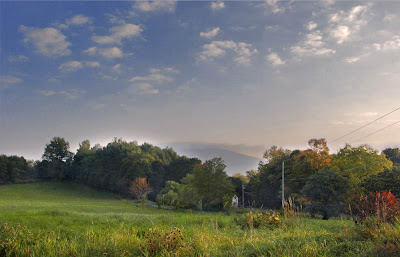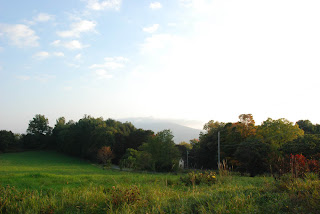
I have spent much of my time this past week processing photographs -- naming and filing the best ones, tossing the bad ones. But there's another step in there that I don't talk about very much, because, for photographers, there's a little bit of shame around that step.
This particular step, the one I realized in meditation this morning that I have been ashamed to talk about, is Photoshopping: taking a weak photo and making it better. Why is there shame around this issue? In my particular case, the shame is this: I bought a new camera back in January, and I cannot seem to get it to handle light as gracefully as my former camera did. I have played with any number of settings, but cannot achieve the balance of light and color that my old camera did almost automatically.
So why is this shameful? Because there is a sense among photographers that we should KNOW our equipment; that we should be able to manipulate all the variables available to us -- focus, aperture, exposure, ASA, etc. -- to produce a uniquely individual image that expresses our particular vision of the world. But I am not what is known in the trade as an equipment jock: I tend to stick to one camera and one lens; for me photography is about composition, what I see through the viewfinder and its relation to the world around me. In the Tao of photography, we are "supposed" to strike a balance between the feminine side of photography -- capturing what we see in response to some inner muse -- and the masculine side: manipulating the event and the equipment to CREATE an image. Clearly I tend to err on the feminine side of this equation.

Which is not to say I don't manipulate. But I do my manipulating in Photoshop. What I realized this morning is that what I do in Photoshop is not unlike what I do in meditation: I look for the point of interest, the object or subject that was capturing me at the time I popped the shutter, and I attempt to throw light on it. And, because my camera hasn't been doing a good job of this, I have to be much more conscious about the process.
What this means is that I take an image like this one and, using Photoshop, I work to achieve a more even balance between the light and the dark, so that the point of interest may be more exposed, and so that the other elements of the photo also have a chance to shine. Because if each element does its part in a balanced manner, the image will have the impact that the composition deserves. The data that emerges is already in the image, but for whatever reason the initial capture was out of balance. The result of my labors is the image that appears at the top of this post.
What does this have to do with mindfulness and the Via Media? Hmm. I think it may take SEVERAL blogs to answer that question. But the short answer is this: that mindfulness is the act of drawing attention to the present moment, while at the same time being aware of all that is happening around the focus of that moment. Mindfulness is being aware of the possibilities in the moment as well as its situation and context. Which is what happens in the Photoshopping process: I am going back into the photographic moment and drawing attention to the subject of my photo, while at the same time, by evening out the balance of light and color, attempting to give weight to what is going on around the photo. And my particular approach to that is very like my approach to faith, and politics, and life in general: an emphasis on the Via Media, the Middle Way. Or, another way to say that, everything in moderation, everything in balance. In politics, in faith, and in photography, I approach the subject with an egalitarian willingness to consider that, on some plane, every point may have value. I try -- though I do not always succeed -- to approach human beings the same way. As Einstein says, "Everyone should be respected as an individual, but no one idolized."
Which, I realize as I look out the window and see that the morning fog has rolled in, is probably why, as a photographer, I am so much more pleased with my work when shooting here in the Northwest. The diffuse light created by gray skies and fog makes it easier for me and my camera to achieve a balance of light and color. In New England, as in Venice, it was those glorious bright sunny days that made it so difficult to achieve the balance I seek.
For some reason that makes me think of a quote I read just this morning from Bahauddin's The Drowned Book: "Grief is better than happiness, because in grief a person draws close to God. Your wings open. A tent is set up in the desert where God can visit you." Perhaps grief, like gray skies, fog and rain, draws a blanket of gray over our vision, like one of those neutralizing filters we photographers are supposed to use on bright sunny days. And somehow leveling life out that way, even though it makes life or images feel flat, allows what is really important to shine through; raises our conscious awareness of the totality of each moment, of all the factors that contribute to who we are and what we see and feel. And it may be that that openness to the possibility of the moment is the ingredient most likely to fuel growth and change.
No comments:
Post a Comment